Revised 29 January 2022
Accepted 7 December 2022
Available Online 10 January 2023
- DOI
- https://doi.org/10.55060/s.atssh.221230.015
- Keywords
- Monument
Memory
Time of erection
Image
Damnation
Destruction - Abstract
This article is devoted to the world practice of installing monuments as the embodiment of the connection between the architecturally organized environment and the spiritual state of society. Illustrative examples from different parts of the world relating to different historical periods demonstrate the importance of the significance of monuments and saving the memory.
- Copyright
- © 2022 The Authors. Published by Athena International Publishing B.V.
- Open Access
- This is an open access article distributed under the CC BY-NC 4.0 license (https://creativecommons.org/licenses/by-nc/4.0/).
1. INTRODUCTION
In architecture temporal and spatial factors have always been of interrelated and paramount importance. Social development of certain societies, advanced development of science and technology, change of artistic styles are obvious, as well as their impact on the architectural environment. Siegfried Gideon, theorist of architecture, said: “Temporal and spatial theory is an interaction and convergence of inner and outer space as well as simultaneity of comprehension of this connection by a human” [1].
While studying “interaction and convergence” of architecture and society in different historical epochs, one may ask a question: does “historicity” prevail over architectural development? This kind of prevalence as absolute condition of a stage of human development was stressed by Paul-Michel Foucault: “… apriori cannot avoid historicity: it is not above the events and in the motionless sky as an inner structure” [2].
So, does historicity, which “cannot be avoided”, dominate or does it contain fixed paradigms? Let’s study the impact of the architectural environment on spiritual culture, “intellectual space” and the reverse impact in temporal dimension. It is possible to visually trace these interactions using the example of monumental architecture, i.e. monuments, the objects where spiritual scope and “address to society” prevail.
The objects of monumental art, i.e. monuments, are material, visible symbols created by people. They include two kinds of impact on humans. The first is direct visual perception of a monument by viewers which induces emotions, associations and stimulates further actions. The second is the impact on viewers which remains within a considerable period of time since the creation of the monument. This impact and the viewers’ reaction can refer to the perception and evaluation of the historical period of the monument’s creation. The impact can be educational but sometimes possess emotional coloring of rejection or acceptance of the historical past. The very term monument means “message of the memory”. “But then memory is soul…” Aurelius Augustinus once said [Confessiones, X, XIV, 21].
2. PAGAN IDOLS
Materialized, visible implementations of certain images are known since ancient times. As we know, the first anthropomorphic figures were of religious-worshipping, ritual character (Fig. 1).
With the passage of time, the art of making figurines developed into the creation of large-scale images of anthropomorphic, divine figures. It was connected to the unification of some groups, families into tribes and later states were formed. The rituals, performed in front of the idol, had a mass, collective character. Thus the figures served as symbols of human unity (Fig. 2).
This is what a Russian historian wrote about it: “Idols were considered to be not images but gods’ bodies animated by them, and people prostrated themselves in front of a piece of wood or an ingot of ore in expectation of salvation and prosperity” [3]. The craft of making such images turned into monumental, architectural and sculptural art. Created divine images could possess individual features, which was caused by the interpretation of the image by its creator.
3. SYMBOLS OF POWER AND FAITH
The formation of state incorporations (Ancient Egypt, Mesopotamia, Ancient Greece, Ancient Rome) set a new task, i.e. to implement in a visible sculptural image not only an abstract divinity but a real ruler, tsar, actually, to “deify” him. For example, that is what historian Leo Diaconus wrote about a ruler: “Nebucadnezar of Babylon who erected a statue to himself…” [History, V, 3].
Monumental art flourished in Ancient Rome which inherited a great sculptural skill from Ancient Greece. It began to erect monuments to emperors, heroes, outstanding people which had quite individual portrait features.
But Ancient Rome developed a high-level law system, legalized the right to destroy monuments to the rulers who were deprived of power and the public figures who lost the protection of the authorities. This law was called DAMNATIO MEMORIAE “damnation of memory”. It should be mentioned that toppling of statues, their relocation or even replacement of their heads was widely spread. This is what Suetonius wrote about emperor “The statues of outstanding men… he toppled and broke so that it was impossible to restore them…” [De Vita Caesarum, Book 4, Caligula, 34]. Suetonius also mentioned a fine gesture of Julius Caesar who “ordered to restore the statues to Lucius Sula and Pompey broken by people” [Ibid, Book 1, Julius Caesar, 75(4)] (Fig. 3, Fig. 4).
The advent of Christianity meant not only the acceptance of great faith but also reinterpretation of pagan past. In the very essence of Christian faith there was rejection of pagan symbols, including man-made idols: “You are not to make any gods alongside Me; you are not to make for yourselves gods of silver or gold” [Exodus, 20, 23].
But in this great transformation of humankind the same problems appeared in due course, i.e. the creation of visible images which are connected with the basis of faith. As early as in the 3rd century AD, during the rule of Emperor Alexander Sever “…he placed a bust of Christ in his private chapel along with images of leaders of other faiths…” [4].
Many years passed and the Christian images became one of the most important in sacred art. Wonderful sculptures were created by folk, non-professional artists (Fig. 5, Fig. 6).

Clay figurines, 14th–12th century BC (Delphi Archaeological Museum).

Turkic and Scythian statues (Almaty and Moscow museums).
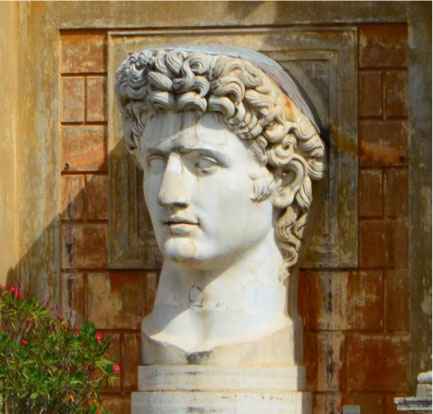
Head of emperor Augustus (Vatican Museum).
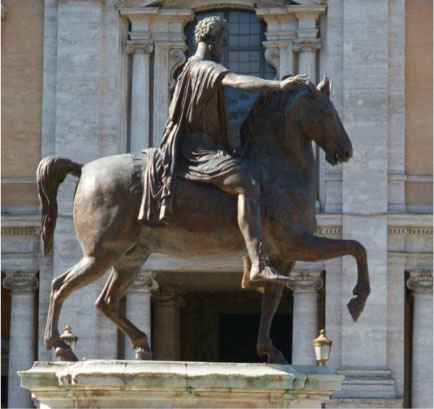
Equestrian statue of Marcus Aurelius (Rome).
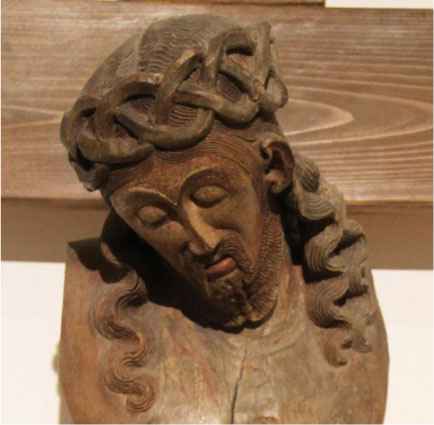
Statue of Christ (National Art Museum, Belarus).
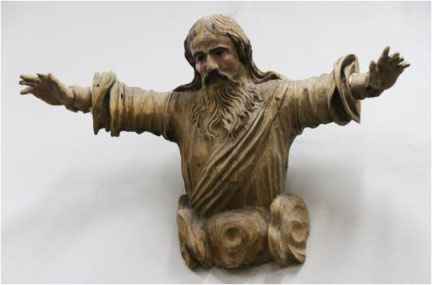
Statue of Christ (Academy of Science Museum, Belarus).
The first theorists of architecture comprehend the process of erecting statues as an important part of the organization of the human environment. Leon Battista Alberti wrote in the 15th century: “statues…serve as decorations for both sacred and public buildings, preserving amazing memory of both people and things” [5]. Thus, both the architectural and planning and the spiritual and aesthetic significance of the installation of monuments were emphasized. But the “curse of memory” did not disappear. In the epoch of French and October (Russian) Revolutions monuments to crowned heads used to be destroyed (Fig. 7). In the 1960s the monuments to Stalin were toppled in the USSR (Fig. 8).
4. IDEAS OF TODAY
The end of the 20th and first years of the 21st century were also marked by a wave of monuments toppling. The Taliban destroyed wonderful monuments of Buddha, in Poland, Lithuania, Latvia, the Czech Republic and Ukraine many Soviet monuments were destroyed, as well as a wonderful monument of F. Dzerzhinsky in Moscow and monuments of Columbus and general Lee in the United States (Fig. 9).
Another form of destruction of traditional monumental objects as symbols of memory is their desacralization, i.e. turning them from the objects of worship into the objects of accessibility and even articles of consumption. At the end of the 20th century a style of genre (street) sculpture found its development.
This style of monumental art, sometimes called monumental and decorative, firstly implies the absence of a basement for a statue, secondly proximity of statues to human dimensions, and thirdly the arrangement of viewers’ access to the monument for touching it or taking a photo-selfie. Monuments must be deprived of seriousness, magnitude and may even cause a smile or laughter (Fig. 10).
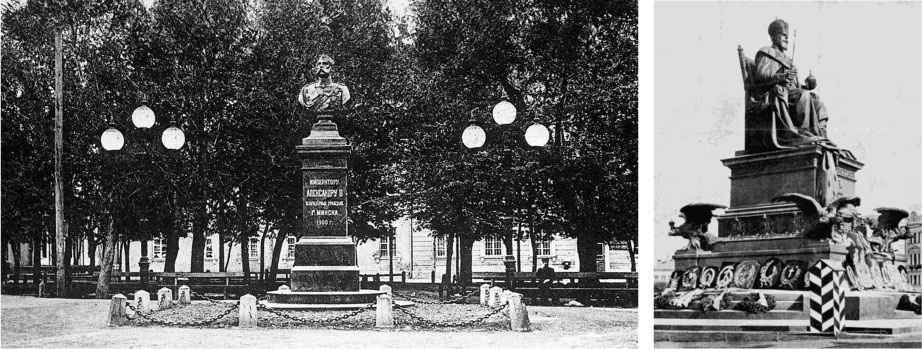
Destroyed statues of tsars in Minsk (left) and Moscow (right).
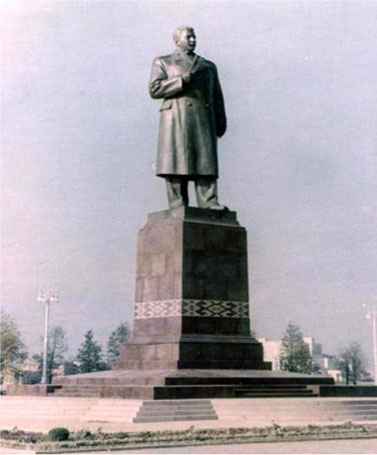
Destroyed statue of Stalin in Minsk.
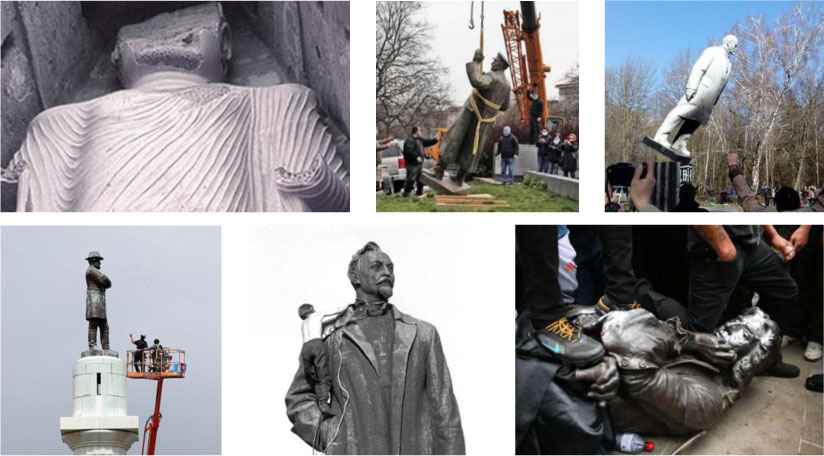
Destructions of monuments from the end of the 20th to the beginning of the 21st century.
5. CONCLUSION
Coming back to Paul-Michel Foucault’s theories, it is possible to dispute his statement about a lack of stability in history (“historicity of a period”) and assert that “the curse of memory” as a social and psychological notion accompanies humankind at all the stages of its history, which is directly reflected in the instability of the architectural environment.
Today we are evidence of not only material or artistic losses in the world but also of destruction of the memory itself of a certain historical period and its public figures. The “damnation of memory” continues, which may mean that pagan belief in superpower of cult figures still exists in public mind.
Here we must return to the enduring value of human civilization, about which Blessed Augustine once wrote: “Thus we call memory itself mind” [6].

Genre (street) sculptures – A: London – B: Jerusalem – C & D: Minsk.
REFERENCES
Cite This Article

TY - CONF AU - Armen S. Sardarov PY - 2023 DA - 2023/01/10 TI - Symbols of Memory BT - Proceedings of the 4th International Conference on Architecture: Heritage, Traditions and Innovations (AHTI 2022) PB - Athena Publishing SP - 113 EP - 117 SN - 2949-8937 UR - https://doi.org/10.55060/s.atssh.221230.015 DO - https://doi.org/10.55060/s.atssh.221230.015 ID - Sardarov2023 ER -









